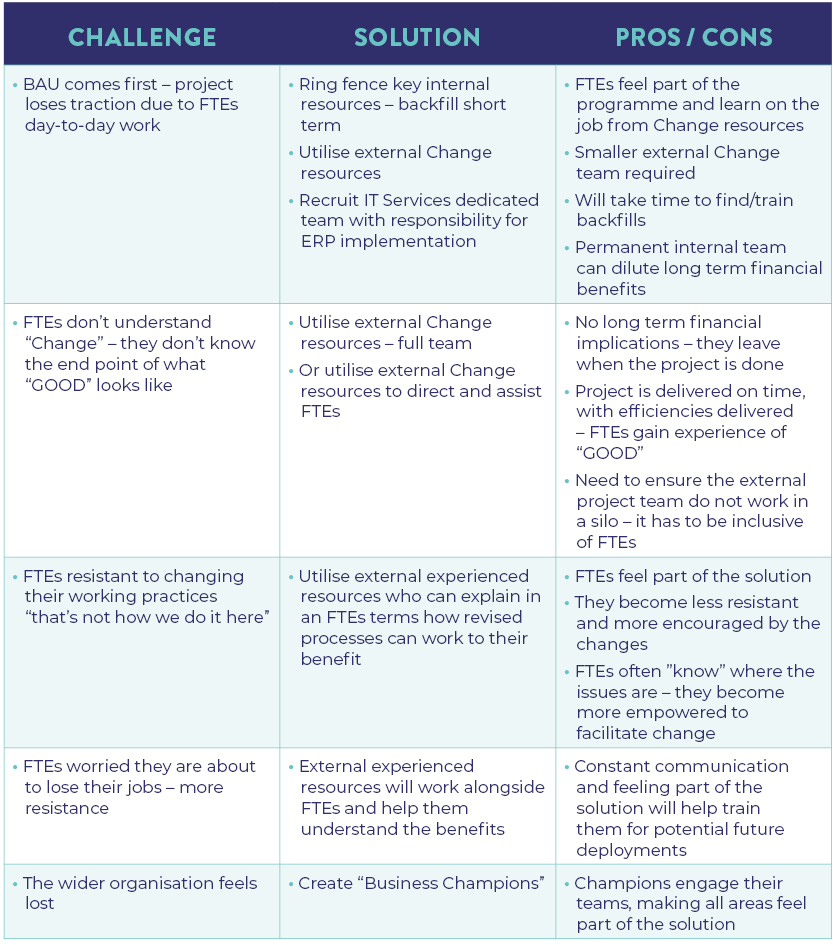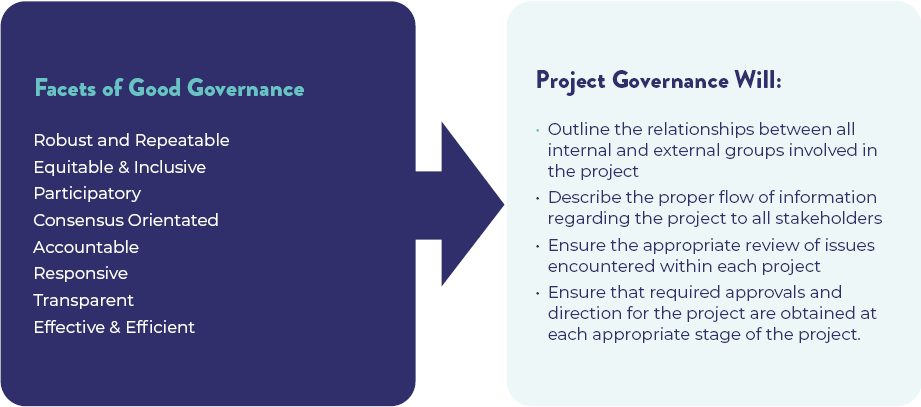In the final part of these ERP diaries, we’re going to have a look at how you
- Build the right team
- Ensure everyone has “bought-in” to the implementation
- Ensure strong governance, and
- Outline the importance of transparent and continuous communication
Building the right team
As we all know, your people are your business. When you embark on an ERP project, you have to be conscious of the fact you’re about to ask them to (potentially) do more, change day-to-day practices they’re likely to want to keep and involve them in something they may be worried about (ERPs are often sold internally as a means of driving out inefficiencies – “job cuts” is what people hear…..).
So what are the main challenges, and what you can do to alleviate them?

Ensure everyone who needs to be involved is involved. Your great people need to understand that it’s “their” system and explain to them how it will not only benefit the company as a whole but “them personally” in their actual day-to-day role.
There will for sure be some expertise you don’t have internally (e.g. Data Architects/Analysts, Business Process Analysts, Project Managers) and it would be unwise to expect your current resources to be able to fill these roles. If you do, you’re pretty much setting your implementation (and your people) up to fail.
BUY IN – THE JOURNEY
COMMUNICATE, COMMUNICATE, COMMUNICATE!!!!!
Projects often “fail” because organisations/people simply fail to clearly articulate the vision and the project’s success criteria. This vision must be successfully communicated to each stakeholder and team member within your organisation. The whole team should be able to visualise the result, to work towards a common goal.
Regular reporting of implementation progress and status is crucial to the success of the project. Communicating this to all stakeholders clearly and transparently is paramount so that all understand what the key messages are. Diagrams, charts, graphs and tables should be maximised here. The well-known saying “a picture is worth a thousand words” is no less true than when communicating project progress or status.
Constant and consistent communication across your organisation will ensure your team feels part of the project, as well as provide a means for them to ask questions and provide feedback.
Remember, approximately 20% of projects fail due to poor communication.
Governance, set yourself up for success!
The purpose of project governance is to provide a decision-making framework that is logical, robust and repeatable to govern any type of project or programme, and independent of the underlying usage of project methodology. In this way, you will have a structured approach for conducting both your business-as-usual activities and business change, or project related activities.
You need to formalise the “what if” scenarios in case of issue management (like budget restrictions, unforeseen project events, scope creep…) and decision management. It will resolve the uncertainties of “who can decide what” in a temporary environment, and it should clarify the roles of all defined and designated stakeholders.

The Project Sponsor, Stakeholders and Project Manager
- A key role in project governance is that of the project sponsor. The project sponsor has three main areas of responsibility which are to the board, the Project Manager and the project stakeholders.
- A “stakeholder” in this instance is either an individual or group who is impacted by the outcome of the project. They have an interest in the success of the project and can be within or outside the organisation that is sponsoring the project.
- The Project Manager owns the day-to-day responsibility of the project. He or she manages the milestones, and information flows that inform decision-makers.
Some suggestions in dealing with senior management peers & VIP stakeholders:
- Develop in-depth plans and major milestones that must be approved by your senior management team during the planning and design phases of the project.
- Ask your SMT peers associated with your project for their information reporting needs and frequency.
- Develop a status reporting methodology to be distributed on a scheduled basis.
- Keep them informed of project risks and potential impacts at all times.
- If you need their resources for the project then it’s best to communicate that in advance. Budget and plan for it!
Some challenges the Project Team may face:
- Because project team members are borrowed and they don’t report to you, their priorities may be elsewhere.
- They may be juggling multiple projects as well as their full-time job and have difficulty meeting deadlines.
- Personality conflicts may arise. These may be caused by differences in social style or values or they may be the result of some bad experience when people worked together in the past.
The importance of the Programme Implementation partner
As we have outlined in previous episodes, the importance of the PI partner can’t be stressed enough. All of the above you can “have a go at”….yet it’s highly likely this will fail in the implementation at some point – either a total failure or a poor implementation that needs costly remediation.
All of the above can be managed by the PI but the most important thing they bring to the table is their “knowledge and experience” of similar implementations. The “right first-time” approach is key.
Their experience in managing cultural change and guiding you and your team through such a programme will help ensure it all goes well and (oddly….) is a “fun” thing to do. If you’ve followed the steps we’ve outlined in ERP Diaries 1 through 5, then once the team is ready it’s time to go!
We hope you’ve enjoyed reading the diaries, and will be happy to discuss how we can help you in future.
Good luck!





